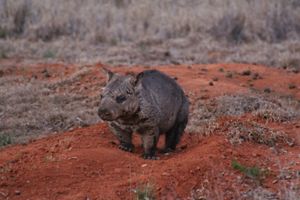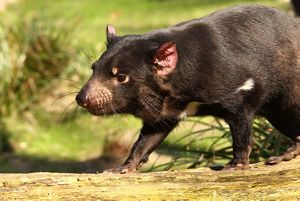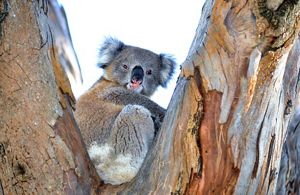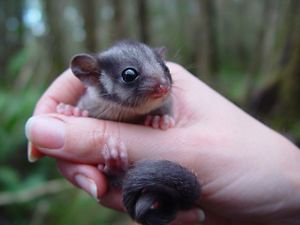Help us protect Australia's future
Help save our unique & endangered wildlife and their homes before they disappear forever!
Donate nowAustralia doesn’t have a good record in protecting our precious biodiversity. Unfortunately, we repeatedly rate amongst the worst countries on Earth for biodiversity loss, such as the loss of mammal species since European settlement.
To ensure their continued survival, we need laws to protect our natural world and all the unique plant and animal species that live in it. In Australia the main law which seeks to do that is called the Environment Protection and Biodiversity Conservation (EPBC) Act which came into force in 2000.
The EPBC Act enables the Australian Government to work with the states and territories of Australia to protect the environment and conserve biodiversity—Australian animals, plants and habitats. For example, the Act is there to ensure proposed developments that potentially threaten nationally endangered species are properly assessed and the conservation of those species is not further compromised.
Ten years on from its first review, in 2020 the EPBC Act is once again under review by the Australian Government
Making a positive difference
As Australia’s national environmental legislation, the EPBC Act has provided critical protection for many of our unique species and ecosystems. Without it, the situation facing many threatened species and ecosystems today would be much worse than it is.
The Act brought together a range of former laws to provide a single framework for the Australian Government to carry out its legal responsibility for biodiversity conservation in Australia.
It's allowed the assessment of proposals such as mining developments so that the Minister for the Environment may consider them and either reject them—if they're found to be environmentally unacceptable—or approve them to go ahead. At times, there will be conditions attached to reduce their environmental impact to an acceptable level.
Quote: Dr James Fitzsimons
To date, the EPBC Act has not prevented the continued massive loss of natural habitats through widespread land clearing.
Areas for improvement
The Nature Conservancy welcomes the opportunity to review the Act. We think there are several ways in which the Act could be amended so that it is better able to achieve its objectives and protect Australian nature. For example:
1. Getting Serious About Land Clearing
In Australia, we still clear around half a million hectares of natural vegetation each year. To date the EPBC Act has not prevented the continued massive loss of natural habitats through widespread land clearing. The Act needs to be amended to address this ongoing and unsustainable practice.
Australian animals and plants cannot survive into the future without habitat. This ‘death-of-a-thousand-cuts’ continues to have a devastating impact on Australian nature.
We continue to eat away at the habitat of already threatened iconic Australian animals like northern populations of Koala, Carnaby’s Black-Cockatoo and Black-throated Finch without sufficient protection by the Act. While positive work is done throughout the country to restore habitats, such as through tree planting programs, the net loss of habitat marches on at an alarming pace.
2. Threat Assessments
The Act needs to provide better and faster ways for potentially threatened species and ecological communities to be assessed.
Scientists know that the number of species and ecosystems that are actually threatened is greater than those listed under the EPBC Act at any point in time. This means that ‘unlisted’ threatened species and ecosystems are not receiving the protection they need and are entitled to under the Act.
For example, an assessment of the conservation status of the Oyster Reef Ecosystem of Southern and Eastern Australia led by The Nature Conservancy, shows that this system is critically endangered. Sadly, it's not currently listed under the Act or protected by it.
3. Recovery Teams and Plans
Recovery Plans for threatened species are one way the Act seeks to protect biodiversity. Recovery Plans are developed by Recovery Teams comprised of experts in the conservation of the particular species in need of protection.
Currently the Act does not compel the timely development or implementation of these teams or plans. This needs to be corrected to ensure threatened species recovery is not dependent on whether or not a plan is developed or implemented.
The list of threatened species awaiting a Recovery Plan includes Leadbeater's possum, Tasmanian Devil, the Kangaroo Island subspecies of the Glossy Black-Cockatoo, the Northern Hairy-nosed Wombat and the northern form of the Koala. Their endangerment might be further at risk because of this lack of a plan to protect them.
Also, the identification and registration of ‘critical habitat’ requires significant improvement. At present just five sites are listed under the EPBC Act’s Register of Critical Habitats and there is no clear process for legally recognising habitat identified as ‘critical’ under recovery plans. Clearly, there are more critical habitats in Australia than just these five. The ability to add habitats to the list also needs to be made more responsive.
For example, after the devastating bushfires of the 2019/20 summer burnt so much habitat in southern and eastern Australia, the Act needed to be able to allow the small refuges left unburnt to be identified and protected quickly and effectively.
Some of the Species in Need of a Recovery Plan
Recovery Plans for threatened species are one way the EPBC Act seeks to protect biodiversity. The list of threatened species awaiting a Recovery Plan includes Leadbeater's possum, Tasmanian Devil, the Kangaroo Island subspecies of the Glossy Black-Cockatoo, the Northern Hairy-nosed Wombat and the northern form of the Koala.






Northern Hairy-nosed Wombat: is one of the rarest land mammals in the world and is critically endangered. The fur on their noses sets them apart from the common wombat. © Queensland Government

Tasmanian Devil: once seen throughout mainland Australia, can now only be found in Tasmania © Thomas Maaßen

Glossy Black-cockatoo: has had much of its habitat destroyed by Australia's disastrous bushfire season in 2019/2020 that burnt 10 million hectares of habitat © Calista Cameron

Koala in a gum tree: in southern NSW © Sinclair Oldfield

Leadbeater's Possum: is a critically endangered possum largely restricted to small pockets of alpine ash, mountain ash, and snow gum forests in the Central Highlands of Victoria © D.Harley
You Can Help Threatened Species Recover
Please make a generous gift to help protect critical habitat in Australia.
Donate now4. Informed decision-making
The EPBC Act should also be reformed to support genuinely informed decision-making that considers the full range of environmental, cultural and socio-economic values impacted by development decisions.
Local people, communities and wider interests need to be able to have appropriate input into such decisions. In particular, the aspirations of Indigenous communities in northern and central Australia, where much of the land is held under various forms of Indigenous title, need to be considered and supported in a much better way.
For a detailed look at our submission to the Australian Government’s EPBC Act review, including all of our suggested improvements, click here.



